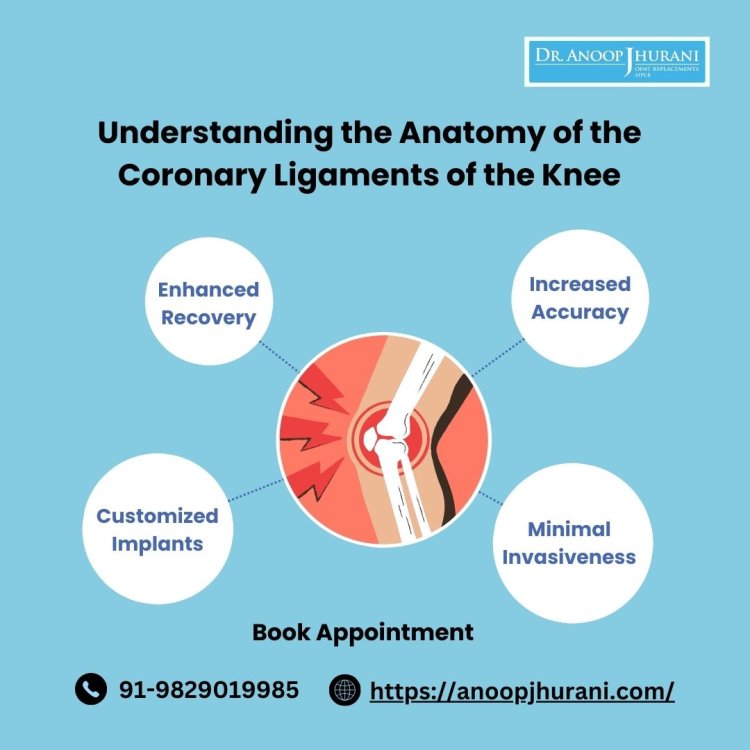The Role of Coronary Ligaments in Knee Stability
Dr. Anoop Jhurani offers orthopedic services such as knee and hip replacements. He is a renowned orthopedic surgeon in Jaipur, India.
Share this Post to earn Money ( Upto ₹100 per 1000 Views )

Coronary ligaments are bands of fibrous tissue that connect the menisci (the cartilage pads) to the tibia (shinbone). These ligaments play a critical role in stabilizing the knee joint and ensuring the menisci stay in place, allowing smooth and pain-free movement.
Functions of Coronary Ligaments
1. Stabilization: The primary function of the coronary ligaments is to stabilize the menisci, ensuring they do not shift out of place during movement. This stabilization helps in maintaining proper joint mechanics.
2. Joint Integrity: By securing the menisci to the tibia, the coronary ligaments help maintain the integrity of the knee joint, allowing it to withstand various stresses and loads during activities such as walking, running, and jumping.
3. Smooth Movement: These ligaments facilitate smooth interaction between the bones, muscles, and other soft tissues of the knee, preventing excessive friction and wear-and-tear of the joint surfaces.
Common Issues with Coronary Ligaments
Injuries to the coronary ligaments can occur due to trauma, overuse, or degenerative changes. Common issues include:
1. Sprains and Tears: These can result from sudden twists or impacts, leading to pain, swelling, and instability in the knee.
2. Degeneration: Over time, the coronary ligaments can weaken due to wear and tear, particularly in individuals with osteoarthritis or those who engage in repetitive knee movements.
3. Inflammation: Chronic stress on the knee can lead to inflammation of the coronary ligaments, causing pain and reduced mobility.
Robotic-Assisted Knee and Hip Replacement Surgery
Robotic-assisted knee replacement surgery involves the use of advanced robotic technology to enhance the precision of the surgical procedure. This technology allows surgeons to create a detailed 3D model of the patient’s knee, facilitating accurate alignment and placement of the implant.
Benefits of Robotic-Assisted Surgery:
1. Increased Accuracy: The robotic system provides real-time feedback and guidance, ensuring that the surgeon can make precise cuts and placements, which is crucial for the longevity and functionality of the implant.
2. Minimal Invasiveness: Robotic surgery typically involves smaller incisions, leading to reduced trauma to the surrounding tissues, less pain, and quicker recovery times.
3. Customized Implants: The use of detailed imaging allows for the customization of implants to fit the patient’s unique anatomy, enhancing the overall success of the surgery.
4. Enhanced Recovery: Patients often experience faster recovery and a quicker return to normal activities due to the accuracy and efficiency of the robotic-assisted procedure.
Conclusion
Understanding the anatomy and function of the coronary ligaments of the knee is essential for recognizing the importance of maintaining knee health. For those suffering from knee issues, advanced surgical options like robotic-assisted knee replacement, performed by experts such as Dr. Anoop Jhurani, offer a promising solution for pain relief and improved mobility. Don’t let knee pain hinder your life—seek expert care and take the first step towards a pain-free future.







